Our Blog - Bretagne Trip - Summer 2021 - Pont-l'Abbé
There has been human presence in the area of Pont-l'Abbé from the Paleolithic and Neolithic times. Remains of an ancient Gallic village have been found here and a Roman road going from Quimper to Pointe de Penmarch passed through Pont-l'Abbé. The town itself has been growing pretty consistently in population, which is always a good sign.
The Pont-l'Abbé bridge is one of the nine "inhabited" bridges that can be found in France. It was built in the 12th century and it is how the town got its name. The uniqueness of the bridge is that it has both the normal road that most bridges have, but also is wide enough that it has buildings sitting on the bridge itself that has stores as well as housing. At one point in time, there was a flour mill because the mill could be run with hydraulic power harnessed from the water right below the factory.
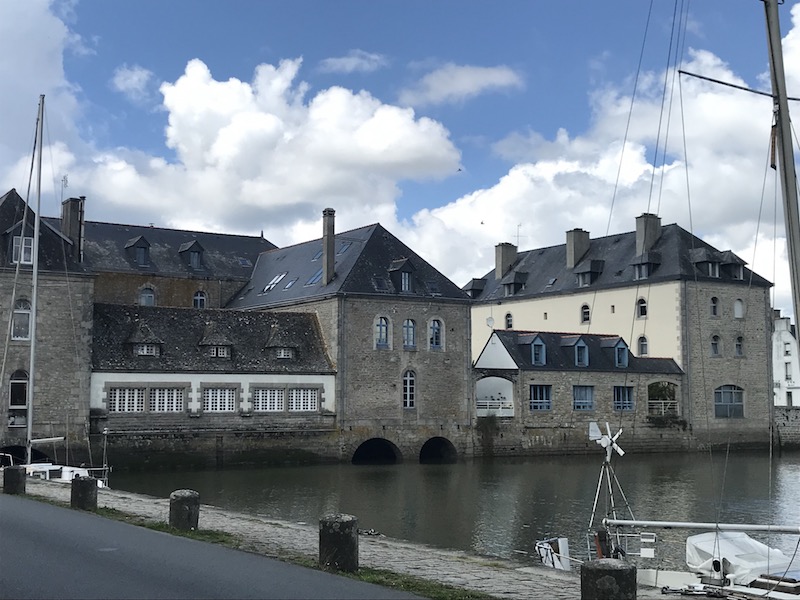
These pictures on the sides of buildings are pretty interesting. To promote the culture of the area the town decided to select 15 pictures (pulled from a collection of 1,500 photos), and they have installed colorized extra-large reproductions of them on the sides of various buildings in town. They show the traditional Bigouden clothing. You'll notice the very tall lace hats, this is probably the most well-known of the clothing. The tall lace bonnet is worn by women, which covered only the top of the skull and extended to a triangle of fabric mounted on a base. These were embroidered with patterns of flowers. By around 1900, the original hat had evolved into a tall sugarloaf shape. In the early 20th century the cap became even taller, reaching 15 to 20 centimeters (6-8 inches) in the late 1920s and even taller just after the Second World War. Since 2000, the cap has stayed between 30 and 35 centimeters (12-14 inches) tall.



Then as we walked around town, we saw lots of old houses, one of the best ones that we saw was this one over the Pretty Cosy & Compagnie store. It was in great shape and dates from 1652.

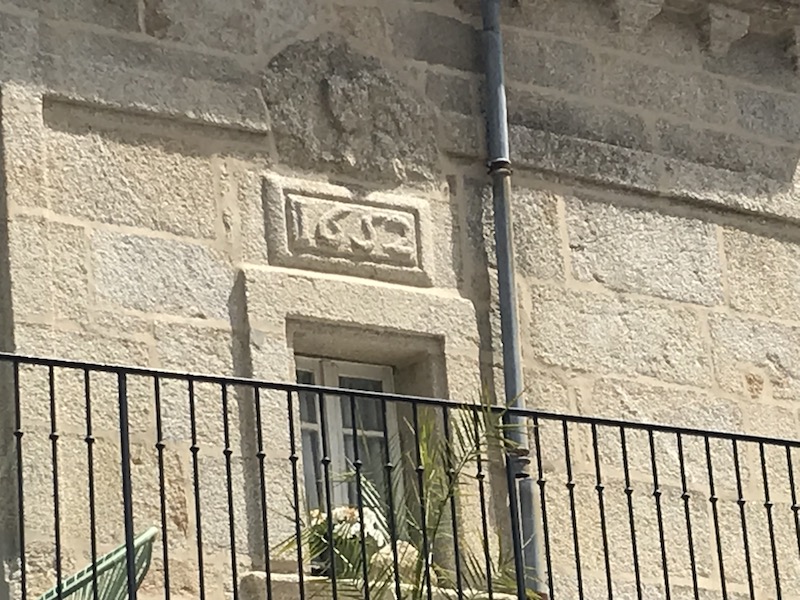
The Notre-Dame-des-Carmes church dates from the Gothic period, built between 1383 and 1411. It is the only thing remaining from the Carmelite convent that was founded here. It is characterized by the tower (that you can somewhat see near the back) with a slate roof, which was added in 1603. You can definitely tell that the architecture of the tower is different from that of the main church, due to the different times that it was built. I don't have too much information on the church, but to me, it seems somewhat unfinished ... missing side aisles on the right-hand side.

The ceiling of the nave and the single aisle are paneled, and here you can see the gothic arches on the left, separating the nave and the aisle.

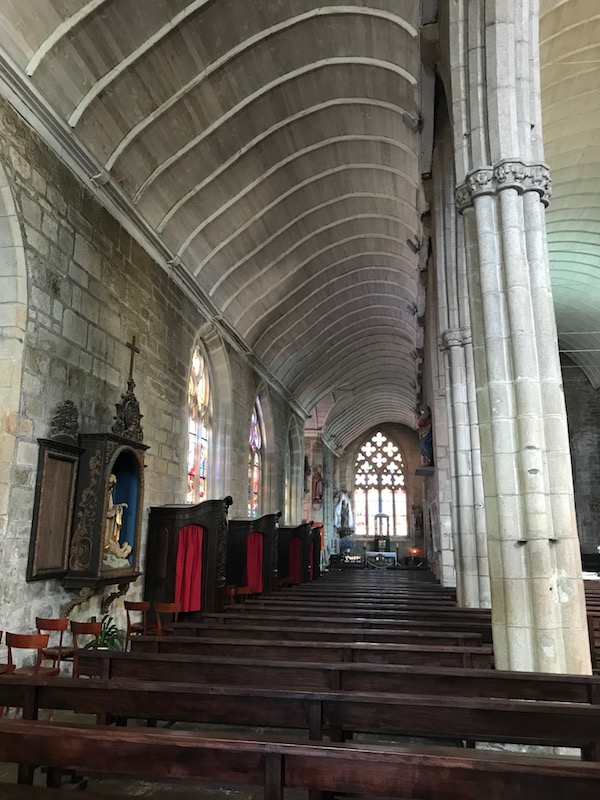
The large rose window is one of the best examples of a 15th century rose window in Brittany.
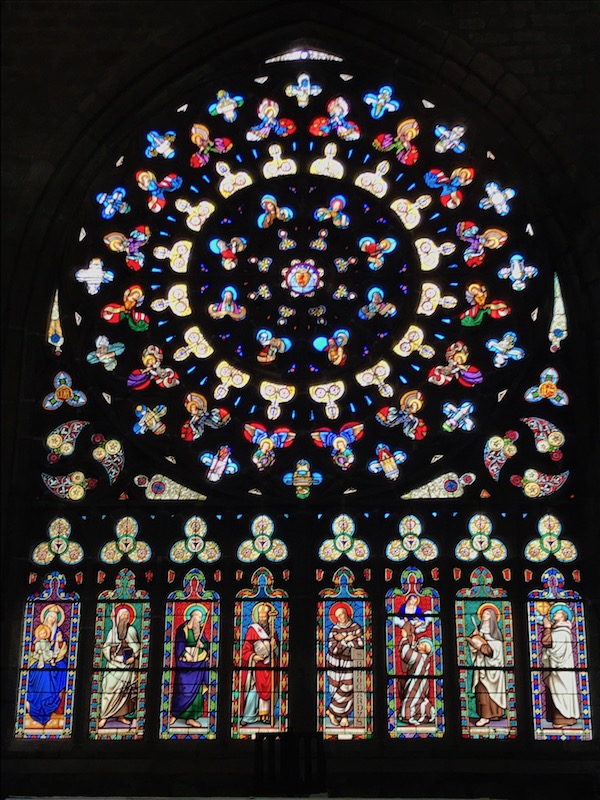
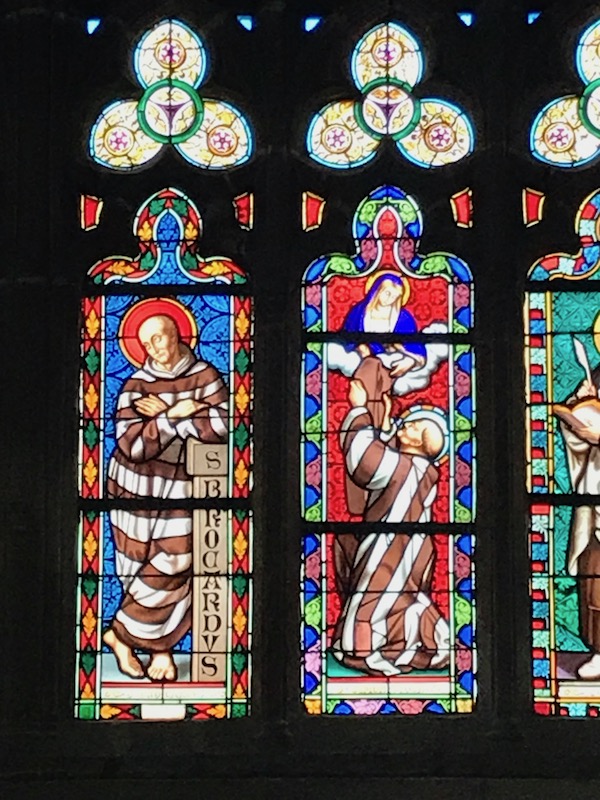
Some of the other stained-glass windows, which were installed in 1899 and 1901.

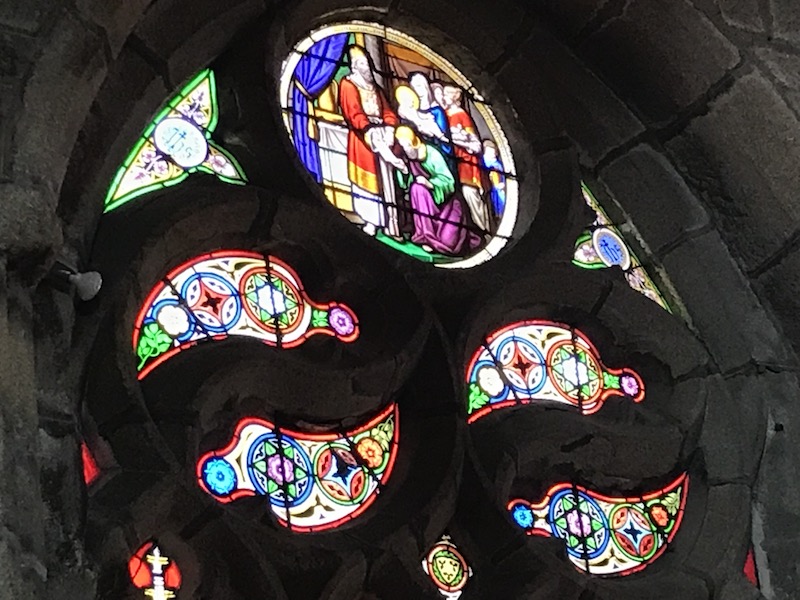
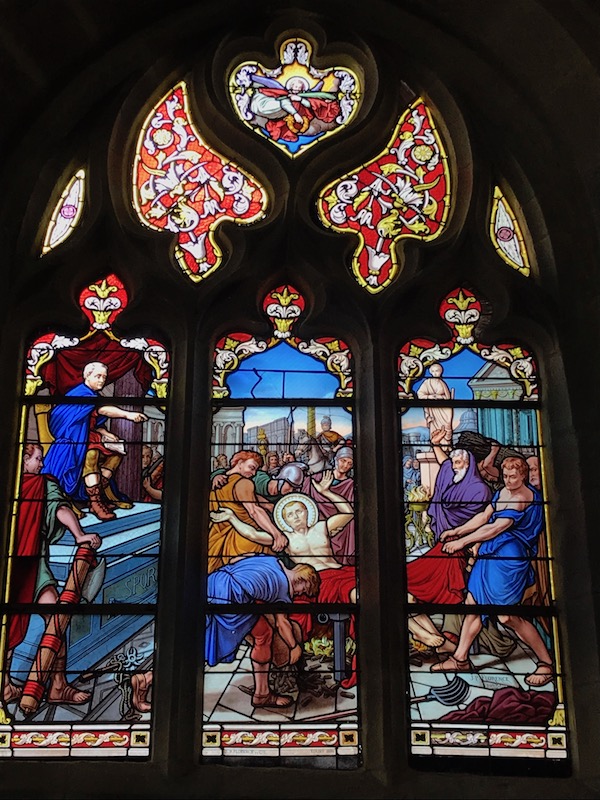
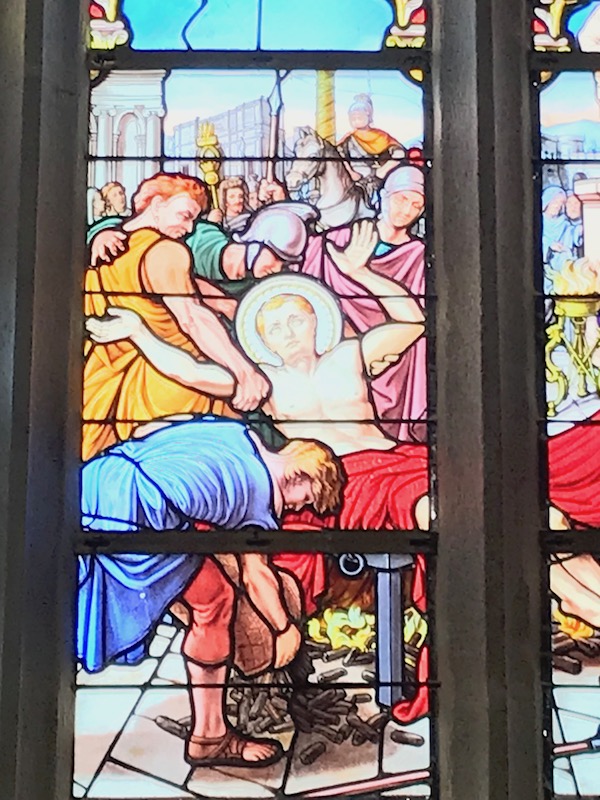
Most of the decorations disappeared in the 19th century, but this altarpiece (the altarpiece of Saint Crispin and Saint Crispian) is from the end of the 17th century. Saints Crispin and Crispinian are the Christian patron saints of cobblers, curriers, tanners, and leather workers. They were beheaded in the year 285 or 286.
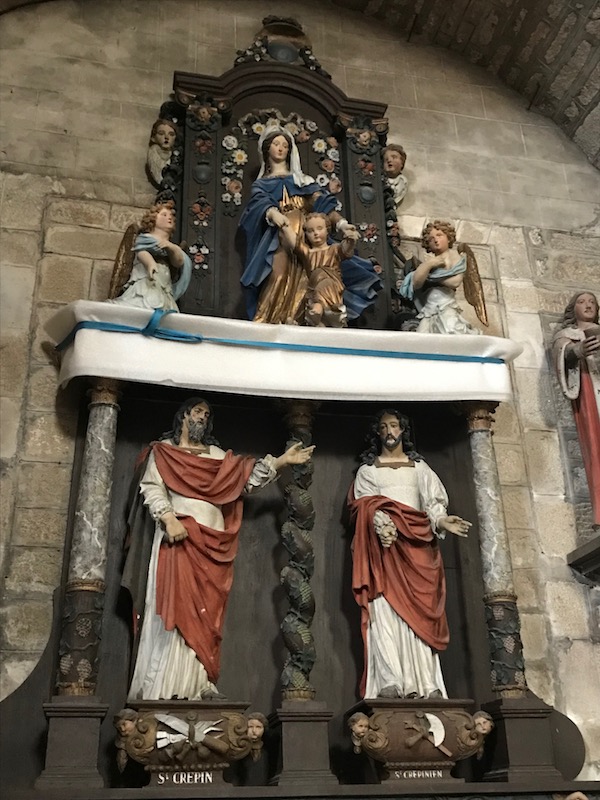
The Chateau des Barons du Pont was originally a feudal motte founded by monks of a nearby abbey at the end of the bridge over the river. It was taken over during the Norman invasion and the lords who remained here built this castle in the 14th century. It was modified and enlarged in the 17th and 18th centuries. During the French Revolution, it was sold as "national property" and partly demolished before being bought by the town in 1836. It now houses the town hall as well as a museum with traditional costumes and headdresses of the Bigouden area.

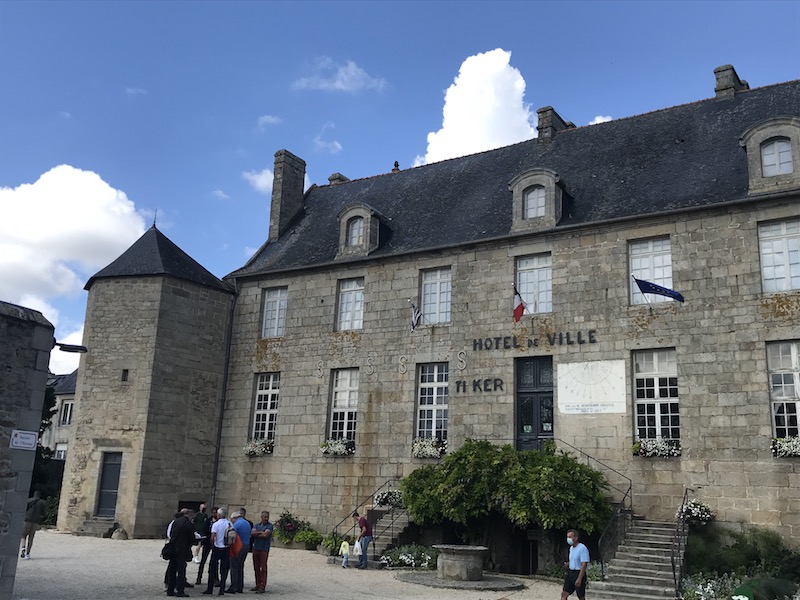
We took a little walk in the countryside and Lucy was really excited to see the area.
